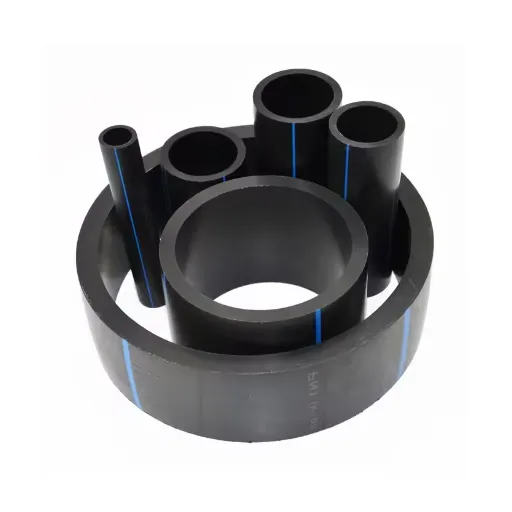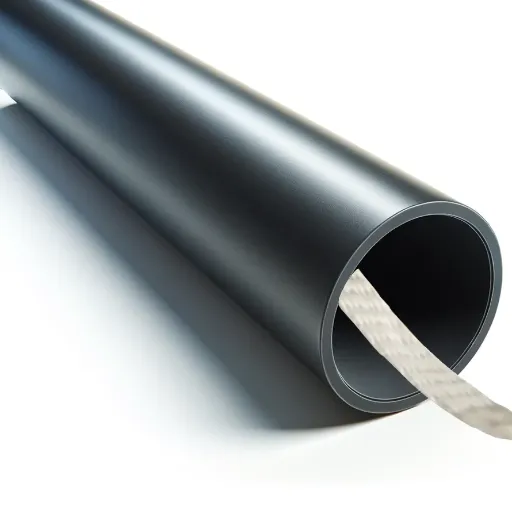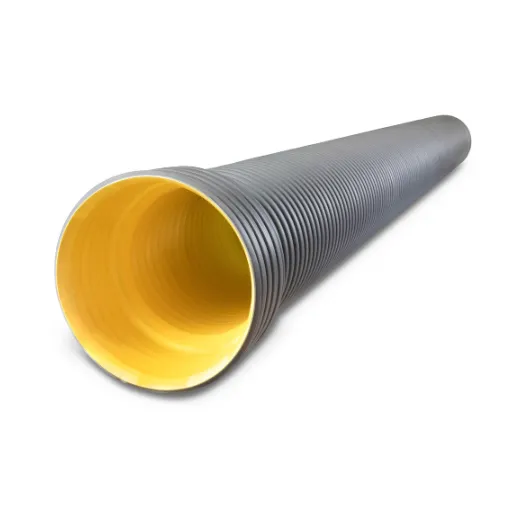High-Density Polyethylene (HDPE) has revolutionized the piping industry, offering unmatched durability, flexibility, and corrosion resistance. Among the numerous fittings available to optimize HDPE piping systems, the HDPE socket female coupler stands out as a critical component for creating secure and efficient connections. Whether you’re dealing with residential plumbing, industrial pipelines, or irrigation systems, understanding this essential fitting is key to achieving reliable performance and long-term success. This article delves deep into the technical aspects, advantages, and wide-ranging applications of the HDPE socket female coupler, providing you with the knowledge needed to make informed decisions about its use in your projects.
Benefits of HDPE Socket Fusion Fittings

Durability and Resistance
The HDPE socket fusion fittings, such as the socket female coupler, are developed for extraordinary durability. They exhibit excellent resistance to physical damages such as abrasion, impact, and stress-cracking in a difficult environment. With such superficial strength of the material, the fittings can maintain their structural integrity right over a long period, even when slept upon under mechanical pressure, thus allowing the cheapest possible fix.
A key attraction of HDPE is its high chemical resistance. The fittings resist corrosion by chemicals, moisture, and other extraneous influences, which is rife with the traditional metal fittings. Hence, HDPE socket female couplers do very well in corrosive environments, whether saline, acidic, or alkaline, to accomplish an efficient flow system with minimal maintenance.
HDPE materials are designed to tolerate a whole lot of a wide temperature range so as to be functional even during conditions of extreme temperature. Their thermal stability will keep them from being deformed under any such conditions, and their UV resistance engenders good performance in an outdoor setting. Such features, along with strength and ease of installation, render the HDPE socket fusion fittings yet another versatile and reliable option for any long-term applications in residential, industrial, or agricultural systems.
Cost-Effectiveness for Water Supply Systems
HDPE socket fusion fittings are cost-effective and preferred for water supply systems having good life expectancy and minimal maintenance requirements. These fittings are resistant to corrosion, scaling, and exposure to varying chemicals, which would otherwise normally have led to expensive repairs or replacements. Being lightweight facilitates the transportation and installation of the HDPE pipes, therefore saving both labor and equipment costs during setup.
Material costs for HDPE fittings are generally competitive when compared to conventional materials such as metal or PVC piping, while offering better durability and flexibility. Wear and tear, or even deformation under high-pressure water applications, do not occur much with HDPE. The investment made in the system pays off through reliable service over many years to come. Another important advantage of HDPE fittings is that their compatibility with the latest fusion techniques allows for precise installation, which in turn reduces water losses and therefore promotes efficiency.
The sustainable benefits of the HDPE socket fusion fittings can thus be seen in reduced energy consumption of pumping due to the smooth internal walls, which contribute towards maintaining optimum flow rates. The environmental advantages also contribute to economic benefits, making HDPE fittings an optimal choice for water supply systems, particularly for residential, industrial, and agricultural applications. Such holistic cost-efficiency further establishes their worth as an upstream investment for infrastructure development.
Versatility in Applications
High-Density Polythene (HDPE) fittings have been the exemplars of adaptability in a very wide array of operations. Such variations come out of the extraordinary physical properties they share, including good resistance to chemicals, the ability to withstand all kinds of pressure, abrasion, and whatnot. Some of the key applications of HDPE fittings are:
- Water Distribution Systems: These HDPE fittings, because of their anti-corrosive properties and the ability to work under varying pressure, find greater applications in municipal and domestic water distribution. Studies have shown that the water leakage due to developing cracks is reduced by over 30% when maintenance is carried out using HDPE pipes compared with usual pipe materials such as steel or concrete.
- Agricultural Irrigation: Such fittings will serve agricultural purposes for the proper delivery of water to the crops. Because of their UV resistance and flexibility, they are useful in both surface irrigation and subsurface irrigation arrangements with long-term reliability.
- Gas Distribution Networks: The natural gas industry is operating the HDPE fittings due to their good pressure-handling ability, chemical resistibility, and leak-proof working performance. HDPE gas pipes are proven to have a service life of over 50 years under normal working conditions.
- Industrial Piping Systems: Facing hard chemicals, acids, and abrasives, HDPE fittings find themselves in an environment that demands their use. They are required to convey industrial chemicals, slurries, and wastes with long service life and minimal maintenance.
- Sewage and Drainage Systems: They do help minimize clogging and scaling thanks to their non-reactive nature and smooth interior surfaces. In addition, HDPE fittings offer a tough realization for extreme wastewater conditions and efficient and sustainable waste disposal.
Such diversified applicability stands as testimony to the versatility of these fittings and also illustrates their importance in many infrastructure sectors where performance, durability, and long-term economy are the prime requirements.
Industries Utilizing HDPE Socket Female Couplers
Water Supply and Distribution
HDPE socket female couplers find incorporation into water supply and distribution systems because of their unmatched durability and anticorrosion properties. Their flexibility allows for mounting into potable water systems, while their high chemical inertness makes them suitable for wastewater management. While minimal loss is assured with high integrity of the pipeline network over time, they also provide for strong handling of high-pressure water flows.
Recent technological enhancements in HDPE production have enhanced these fittings further so that more efficient operations might at least occur, and the costs of operating maintenance might be reduced. They have been designed to withstand environmental extremes that may involve temperature fluctuations and hence are recommended to suit different geographic locations. In said coupling, leakage is avoided, thus reducing the risk of contamination of potable water supplies, thereby providing safer distribution channels.
Industry shows that HDPE fittings, including socket female couplers, last up to 50 years under good conditions. Their longevity, coupled with light weight and ease of installation, makes these fittings an economic choice for mass water supply infrastructure projects. By reducing the number of occasions for replacements or repairs, they could contribute to achieving the Sustainable Development Goals in the water resource management sector.
Agricultural Applications
HDPE fittings-the socket female coupler type-are very important in agricultural water management because of their durability, corrosion resistance, and adaptability to different environments. They render irrigation systems more efficient for water conservation and crop production. The detailed uses of HDPE fittings in agriculture are:
- Drip Irrigation Systems: HDPE fittings are usually employed in drip irrigation systems to join pipelines to emitters, so water is released with precision right at the root zone of plants, thus limiting water wastage to below 10%.
- Sprinkler Systems: HDPE fittings go between the distribution pipes and sprinkler heads, standing up to high pressures and working stresses. They ensure uniform distribution of water on large fields, which is critical for crops requiring constant hydration.
- Water Conveyance in Greenhouse Operations: HDPE fittings find use in greenhouse operations to ensure that water distribution is uniform and reliable under controlled conditions. Their chemical resistance ensures compatibility with water typically treated with fertilizers or pesticides in greenhouse operations.
- Livestock Watering Systems: They are used in livestock watering systems to deliver water to troughs and ponds. Their resistance to UV radiation and cracking ensures that they will serve well over several years, especially in outdoor environments exposed to sunlight.
- Drainage and Flood Control: HDPE fittings help drainage systems to remove excess water that threatens to flood crop fields. The smooth interior surface prevents clogging, helping water flow efficiently even during heavy rains.
The use of HDPE fittings throughout the agroeconomic sectors helps farmers and agro-industries in reducing overhead expenses, improving water-use efficiency, and ensuring longevity of systems. This has made HDPE fittings important in modern sustainable agriculture.
Construction and Infrastructure
High-Density Polyethylene (HDPE) fittings are essential, playing a critical role in the reinforcement of construction and infrastructure development due to their durability, flexibility, and corrosion resistance. These fittings are usually used in water distribution systems, gas pipelines, and sewage systems. HDPE fittings are light, making for ease in transportation and installation, and thus lessening labor time and costs. Also, HDPE fittings can withstand high pressures and environmental stress, thus ensuring that very important systems remain reliable and safe for a long period.
The chemical degradation and UV resistance that are presented to an HDPE fitting in construction make its choice far superior to most others for any above-ground and groundwater application. Because they can maintain their integrity in very harsh environments with maybe extreme temperatures and varying pressures, HDPE fitting is preferred for the long infrastructure projects.
The latest upgradation in the field of HDPE technology has made it even more environmentally friendly. Most modern HDPE systems use recycled materials, which helps promote sustainable construction practices and decrease demand for the primary material. Their long service life means the cost of installation and upkeep is kept to a minimum; they are typically in the range of 50 or more years of lifetime.
Installation Guide for HDPE Socket Fusion Fittings

Preparation for Socket Fusion
Proper preparation is essential to ensure that the HDPE socket fusion joint will reliably create an effective bond when completed. The preparation process begins with the inspection of the pipe and fitting to ensure that they are free of damage, defects, or obstructions. Check that the two components are matched for size and pressure ratings; inappropriate matching may affect the fusion adversely. Also, verify the environmental conditions, since extreme temperatures or excessive moisture in the atmosphere could impair the fusion process.
Before proceeding with heating, the pipe ends and fittings are thoroughly cleaned with a recommended cleaning agent to remove contamination such as dirt, grease, or oxidation. Tools like pipe scrapers are used for preparing the pipe surface by scraping off the oxidized layer that prevents proper bonding. The scraped surfaces should now be smooth and free from any imperfections.
Calibrating and pre-heating the fusion equipment to the precise temperature range recommended by the manufacturer is just as important-typically between 490°F and 510°F (254°C and 266°C). An incorrectly calibrated machine might give insufficient or bad fusions, and data such as melt index and material grade should be used to help specify these parameters. Now, after the equipment has reached the operating temperature, it is time to check the alignment of the pipe and fitting in the socket fusion machine, making sure that the pipes will not become misaligned during the fusion process. The foundation of a strong, permanent, and leakage-free bond in HDPE piping systems is well laid by the proper execution of the preparation stage.
Step-by-Step Installation Process
- Preparation and Inspection: Inspect the pipe and the fitting for any visible defects like scratches, dirt, or moisture. Ensure everything is clean so the surfaces have maximum contact during fusion. Check if all the tools, such as the socket fusion machine, heating tools, or alignment jigs, are in good working condition. Make sure compatible pipe and fitting sizes are used, or if matching for a particular material grade.
- Equipment Calibration: It is required that the fusion machine be accurately calibrated to maintain a temperature anywhere between 450 and 500°F (232-260°C), depending on the grade of material of HDPE. New digital thermometers or infrared thermometers should be frequently used to authenticate proper and uniform heating of the heating surfaces of the tool; disregarding these variances could weaken joints and lead to their failure.
- Marking and Alignment: Mark for insertion depth on pipes and fittings with a ruler and marker to verify appropriate insertion. Overinsertion can cause deformation of materials. Select a jig or an alignment clamp to align the pipe and fitting, and make sure there is no rotational misalignment as the pieces are inserted into the heater.
- Heating Process: Place the pipe and fitting into the heating tool, applying slight pressure so that it conforms very well against the heater surface. Render heating times as studied and stated by the manufacturer, depending on the material and wall thickness. A longer heat-time duration results in material flow and weak joints.
- Joining Process: Immediately after the heating time is completed, remove the pipe and fitting from the heater and insert and press their halves together as fast as possible in a uniform manner. The fused pipe halves shall be pressed together, applying steady axial pressure, avoiding any twisting or misalignment. As the materials come into contact, the fusion shall complete within a few seconds, forming a continuous, smooth bead around the joint.
- Cooling and Inspection: Allow joints to cool under natural conditions without applying any external force or water. Using any method of fast cooling would induce thermal stress, weakening the joint. After cooling, inspect the joint for irregularities in the fusion bead, such as gaps, uneven surfaces, or voids that require refusion.
- Inspecting and Testing the System: The testing process for the piping system is to be commenced after completion of the fusion of all joints. Pressure test the fusion joints as per respective codes and standards (ASTM F2164 – Leak Detection). The pressure is built up gradually with observation for any leaked areas or weak points in the system, and then the system is fully operational.
Following these steps carefully will ensure a high-quality, reliable fusion bond that meets all the minimum requirements set forth by the industry and is capable of long-term performance in HDPE piping systems.
Best Practices for Secure Connections
The installation procedures must be performed with scrupulous care, and appropriate testing must be specified and conducted to ensure that secure and reliable connections are made with piping systems. Surface preparation is essential; such cleaning and inspection of the pipe ends includes any dirt, damage, or contamination that might weaken the bond establishment between the pipes. Improper handling or orientation of the pipe ends or cut-off remnants may cause irregularities in the connections. So utmost care during these stages must be taken.
Maintaining temperature specifications and consistency during joining is yet another critical factor for consideration. For example, great attention needs to be paid to having an accurately calibrated heating device being consistently used to accomplish uniform heat transfer, a factor that is essential for the development of a strong molecular bond. Take into consideration the ambient temperature and wind conditions that might affect the fusion operation under consideration. Calibration of tools and making sure that all equipment is in the best operating condition has to be done always to maintain connection quality free of variances.
Upon completion, each and every connection has to undergo intensive inspection and testing. Pressure testing, by ASTM F2164 or relevant regional standards, asserts that the fusion joint resists the demands of operating life without failure. By following these best practice techniques and working in detail with precision, the eventual success of the piping system and guaranteeing its safety are assured over the long run.
Maintenance and Troubleshooting Tips

Regular Inspection and Maintenance
Maintenance systems for effective piping begin with consistent and thorough inspection procedures. Conduct the visual inspection to detect external signs of wear, discoloration, cracks, or deformations that could affect structural integrity. Employ more sophisticated NDT methods, either ultrasonic or radiographic testing, to detect internal flaws or weaknesses that surface evaluation methods cannot.
Routine pressure monitoring should look into pressure values to make sure the parameters are maintained. Sudden pressure drops may signify leaks or joints coming loose and requiring immediate rectification. Components, including gaskets, valves, or seals, should be replaced according to dates set out by their manufacturers, thereby reducing the risk of system failure caught unawares.
Each inspection and maintenance shall be recorded and maintained properly, including parameters of operational pressure, flow rates, and observations of structural conditions. Embrace predictive maintenance techniques using modern analytical tools, IoT sensors, real-time data monitoring systems, and so on to locate the weak points that may fail and tune the working lifecycle of the system. Regular calibration of these monitoring tools shall help concentrate on the efficiency and safety of the system by analyzing data trends to give reliable and actionable feedback.
Extending the Lifespan of Your Couplers
To ensure the maximized life of couplers, I develop maintenance schedules that are basically proactive, with periodic inspections carried out in line with the manufacturer’s prescriptions. Through wear patterns, stress points, and fatigue signs, potential issues are highlighted for intervention before any major accidents occur. Going through with planned maintenance programs between operational phases means I can keep systems working with maximum efficiency and as little downtime as possible.
Here, I incorporate predictive analysis techniques based on real-time data acquired from a network of IoT-enabled sensors to provide effective monitoring. These technological aids are instrumental in generating information about operational trends to be able to assess where stresses build and areas more vulnerable to degradation. Using that information, I prevent risks or adjust the system and thereby improve the final lifespan and operational performance of couplers.
Also, preferably during a replacement or an upgrade, I strive to use top-of-the-line materials and components because one has to buy couplers that could withstand loads imposed and the local environment. Hence, through well-planned activities incorporating high-end technologies along with material optimization, a well-prolonged operational life for the couplers is always realized for the sake of reliability and profiting on cost.
Current Trends and Advancements in HDPE Fittings

Innovations in HDPE Pipe Technology
Recent developments in HDPE pipe technology have greatly enhanced the performance and applicability of these multi-purpose materials. One such prominent innovation is the use of bimodal polyethylene resin to improve the mechanical properties of HDPE pipes. This greatly improves crack resistance, gives more flexibility and pressure handling to HDPE pipes-well suited to demanding applications such as gas distribution and potable water systems.
Likewise, multilayer HDPE piping systems became an innovation meant to have layers that provide additional properties, such as layers for abrasion resistance or internal chemical barriers. These multilayer pipes are best suited to industrial and wastewater environments for maximized resistance and efficiency.
The application of advanced joining techniques such as electrofusion and butt fusion welds provides leak-proof and robust joints for HDPE systems. These thin-walled joining methods reduce installation time and improve pipeline integrity. By coupling their use with today’s enhanced trenchless installation techniques like horizontal directional drilling (HDD), HDPE pipes now support minimally invasive installations while retaining structural reliability.
The latest HDPE fittings now embed sensors to monitor pressure, flow rates, and potential leaks in real-time, thanks to smart technology integration. These developments make systems operationally efficient while preserving the piping system’s life by executing maintenance strategies. Together, these technologies illustrate the evolution of HDPE to keep pace with greater industry demands for cost-efficient, sustainable, and high-performance materials.
Environmental Considerations in HDPE Manufacturing
The manufacturing of High-Density Polyethylene (HDPE) is fraught with environmental sustainability challenges and potential. HDPE productionis ideally based on petrochemical feedstocks distilled from natural gas and crude oil, which are by nature non-renewable, hence posing threats to the depletion of finite resources. From another angle, the polymerization process used to fabricate HDPE is an energy-intensive process; therefore, from the perspective of greenhouse gas emissions, it is bad if non-renewable sources of energy are used for the manufacture of HDPE.
Environmental impact due to production processes has been minimized to an appreciable extent due to efforts toward green manufacturing in recent years. For instance, the installation of closed-loop systems in plants maximizes the recycling of water and thus reduces the discharge of waste. There also seems to be a fair amount of encouragement for developing bio-based feedstocks, sourced from renewable materials such as plant-based ethanol, as an alternative to lessen the environmental pressure on fossil fuels.
More recycling programs exist to help reduce HDPE’s impact on the environment. HDPE is highly recyclable, and the products made from recycled HDPE retain a significant level of structural integrity to be reused for many purposes, such as piping, packaging, and construction materials. Through such practices, industries worldwide are beginning to embrace circular economy principles that aim to reduce waste and increase the value of materials.
These improvements are evidence that HDPE production environmental effects may be successfully minimized through innovation and sustainable methods without adversely affecting existing levels of performance or industrial scalability.
The Future of High-Density Polyethylene in Various Industries
High-density polyethylene’s sustainability potential and multi-sector versatility shall be the focus if it is to stay on the horizon. One of the most trenchant trends has been the incorporation of bio-based HDPE that is supplied from renewable feedstocks such as sugarcane or other biomass materials. The latest innovations tackle the pollution issues by decreasing the fossil fuel consumption and minimizing the carbon footprint of the product’s manufacturing. In addition, advanced recycling techniques, such as chemical recycling, stand to ensure the establishment of a closed-loop lifecycle for HDPE products, allowing end-of-life plastics to be converted into high-grade resins for fresh applications.
Resin polymers such as HDPE used in the construction, energy, and automotive industries are being expanded because of requirements and demands for lightweight and high-strength chemical-resistant materials. To cite examples, the automotive industry is adopting HDPE to further lighten vehicles, and hence more fuel-efficient and environmentally friendly. The construction industry utilizes HDPE for innovation in durable piping systems and geosynthetics to enhance water conservation and infrastructure longevity. Also, refining the manufacturing process, such as 3D printing, opens yet another realm of applicability for HDPE in rapid prototyping and custom production while sustaining its inherent robustness.
As sustainability and environment-oriented legislation becomes tighter globally, the adaptability of HDPE to conform to these changing standards will further its existence as an indispensable material. The ongoing development and research of HDPE composites strengthened with Nanotechnology will make it super-functional to take onthe real needs of industrial sectors in thermal insulation, impact resistance, and barrier protection.、
References
Frequently Asked Questions (FAQ)
Q: What is an HDPE Socket Female Coupler?
A: An HDPE Socket Female Coupler is a type of pipe fitting designed to connect two pipes, typically made of high-density polyethylene (HDPE). It features a female thread that allows it to securely join with male fittings, providing a durable and leak-proof connection.
Q: How does the HDPE Socket Female Coupler fit into a plumbing system?
A: The HDPE Socket Female Coupler is essential in a plumbing system as it acts as an adapter that connects various sizes of HDPE pipes. It ensures a seamless transition between different fittings, such as elbows and tees, facilitating efficient water flow and distribution.
Q: What are the benefits of using HDPE female adapters?
A: HDPE female adapters provide several benefits, including resistance to corrosion and chemicals, a long service life of up to 50 years, and lightweight construction for easy installation. These fittings are also compatible with various types of HDPE pipe fittings, making them versatile for different applications.
Q: Can HDPE Socket Female Couplers be used with electrofusion welding?
A: Yes, HDPE Socket Female Couplers can be utilized with electrofusion welding techniques. This process ensures a strong bond between the coupler and the HDPE pipe, providing a robust and leak-proof connection that meets the requirements of EN ISO 15494 standards.
Q: What types of HDPE fittings are commonly used with female couplers?
A: Common types of HDPE fittings used with female couplers include compression fittings, molded HDPE fittings, and electrofusion couplers. These fittings work together to create a reliable and efficient piping system for various applications, including water transport.
Q: Are there size variations available for HDPE Socket Female Couplers?
A: Yes, HDPE Socket Female Couplers are available in a variety of size ranges to accommodate different pipe diameters. This ensures flexibility and compatibility with various HDPE pipe fittings and allows for seamless integration within any plumbing system.
Q: What is the role of HDPE butt fusion in joining pipes?
A: HDPE butt fusion is a welding process used to join HDPE pipes and fittings, including socket female couplers. This method involves heating the ends of the pipes and fittings to be joined until they melt and then pressing them together to create a strong, permanent bond.
Q: How do I ensure quality control when using HDPE female adapters?
A: To ensure quality control when using HDPE female adapters, it is essential to source fittings from reputable suppliers that adhere to industry standards. Regular inspections and testing for corrosion resistance, dimensional accuracy, and compatibility with the intended application can also help maintain quality.
Q: What are the common applications for HDPE Socket Female Couplers?
A: HDPE Socket Female Couplers are widely used in a variety of applications, including water distribution systems, irrigation, and industrial plumbing. Their durability and resistance to environmental factors make them ideal for both residential and commercial use.
Q: Can I use HDPE Socket Female Couplers with other types of plastic pipes?
A: While HDPE Socket Female Couplers are specifically designed for high-density polyethylene pipes, they can sometimes be used with other types of plastic pipes if an appropriate adapter is utilized. However, it is crucial to ensure compatibility to maintain the integrity and performance of the pipe connection.






